Learn What Your Customers Want Using Jobs to Be Done.
The Jobs to Be Done framework helps you understand what motivates customer decisions so that your business and brand can align with those needs.

Our Content Is Featured In:

Join 6,165 folks who receive our latest insights and you'll get immediate access to our 10 page brand strategy workbook!
What Are Jobs to Be Done?
A Job to Be Done is defined as the progress that a person is trying to make in a particular circumstance. So, what does that actually mean?
The progress is important because it represents movement toward a goal or aspiration. Jobs are an ongoing struggle for progress, not strictly tasks to be completed. It can be helpful to think of this “progress” as a combination of what the customer wants, and why they want it.
The circumstance is essential to defining the job (and finding a solution for it), because the exact kind of progress desired always depends on a person’s circumstances. As a simple example, “eating a satisfying meal” means something very different when you’re on a date vs. when you’re at the airport vs. when you’re running late to a meeting.
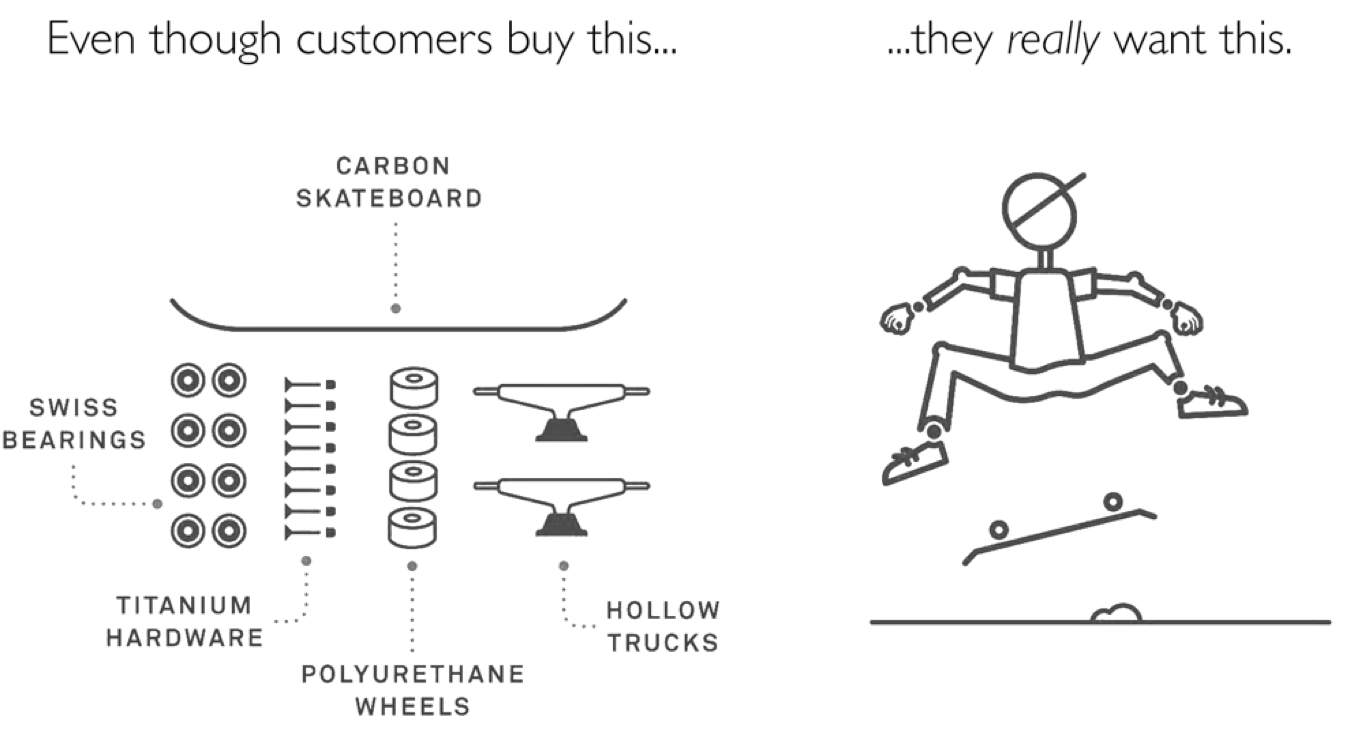
Jobs to Be Done helps us see the difference between a product someone buys and the outcome that they’re seeking. Illustration via Intercom.
The key thing to remember is that we don’t create or invent Jobs for our customers. Instead, we discover them by listening to the struggles of real people with real problems. Through interviews, surveys, and simply talking with your target audience you can learn what your customers’ Jobs are and how they think about and describe them.
Put Jobs to Be Done Into Action
Step-by-step instructions for how to define your customers’ Jobs to Be Done
Job Idea Starters
Your customers could be faced with mundane daily struggles, larger emotional struggles or anything in between.
To spark some ideas, this list highlights a few examples of Jobs that customers in a variety of situations might be motivated to work on.
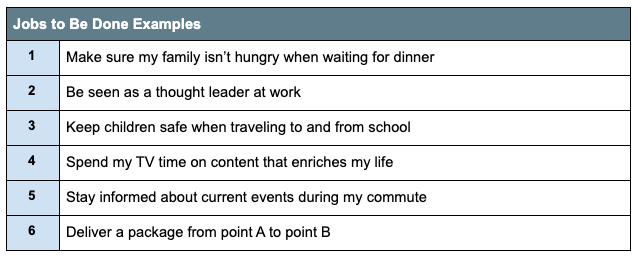
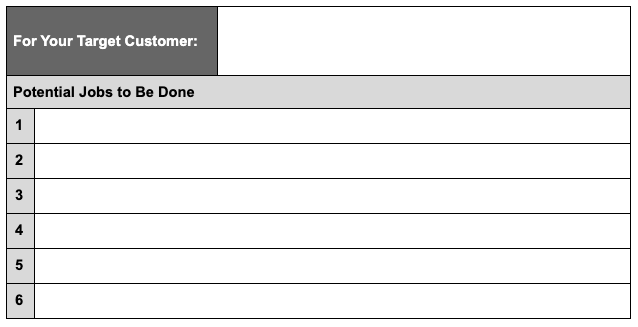
Define Your Customers’ Jobs
Based on your own research and interactions, come up with 4-6 potential Jobs to Be Done your Customers face that you could help them satisfy. Don’t worry too much about the wording or making these perfect.
Ultimately, you will probably only be able to satisfy a limited number of your Customer’s Jobs to be Done well. Next we’ll narrow and refine your list to focus on the most promising options.
Grade And Rank The Jobs
To prioritize which Jobs might be the most valuable to focus on, we can grade them in terms of importance, and frequency of need.
Remember, if it isn’t important, your customers won’t want to pay for help. And if the jobs don’t need to be completed regularly, there may not be a viable business opportunity.
Use this template with each Job to figure out which ones have the best combination of importance and frequency.
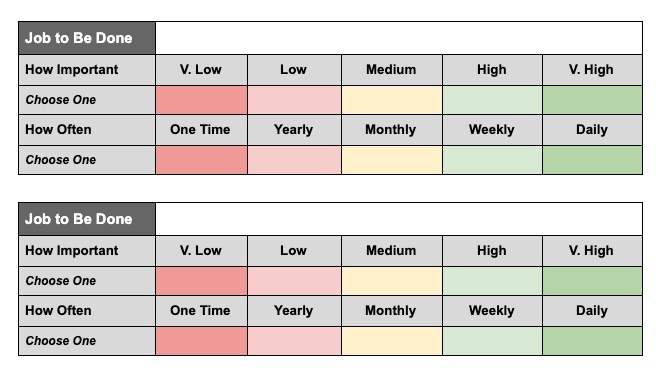
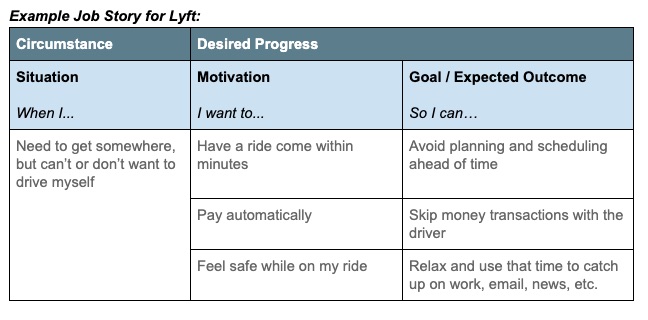
Craft Your Job Stories
Now that we have a general sense of what Jobs your Target Customer faces in his or her life, we’re going to take things a step further.
To do this, we’ll turn your most valuable Jobs into “Job Stories” and look at the underlying reasons why your Customer wants to satisfy them.
Motivations and Outcomes
Now break down your own customer Jobs into 3 parts: Situation, Motivation, and Expected Outcome.
Our goal is to capture the story of what your customers are feeling, when they’re feeling it, and how they hope their lives will improve if they can satisfy their need.
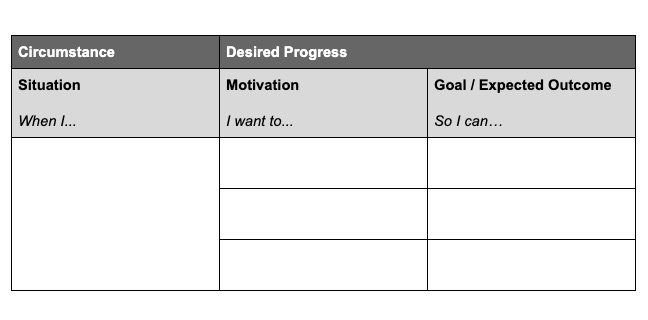
You’ve Done It! Now Use It!
Integrate Jobs to Be Done into your business and brand.
Now that you’ve thought through and defined the Jobs to Be Done for your target customers, you can can put these ideas into action with your product, service, and marketing.
Here are some ways that you can start to integrate Jobs thinking into your business and brand.
- Map alignment between the Jobs you’ve defined and the actual features of your product or service. How well do you satisfy the outcomes your customers are seeking? Where are the gaps in what you provide?
- Find the combination of Jobs that your business can deliver on at a high level and help your audience understand how your business is uniquely suited for their needs.
- Align your marketing and messaging with the motivations and outcomes your customers are seeking and speak to those with needs using emotionally engaging language.
- Know when your customer deals with this struggle so that your business can get their attention at the right moment in their decision-making process.
Get Help Using Jobs to Be Done With Your Brand

Free Brand & Marketing Workbook
Get immediate access to our 10 page workbook to help you define your Core Purpose, Vision, and Core Values, along with resources for Brand Archetypes, Tone of Voice, Messaging, and more!

Hands-on Brand Strategy Help
Transform your best business thinking into an actionable, shareable, growth-oriented guide. Click below to learn about the Brand Guidebook process.


